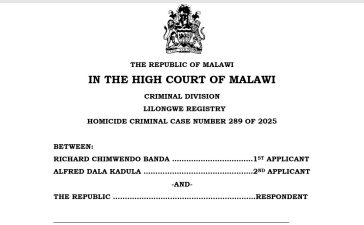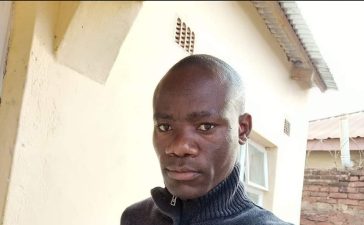In a significant stride towards achieving the ambitious goals set forth in the Malawi 2063 development blueprint, the country has made remarkable progress across various sectors during the first year of the Malawi 2063 First 10-Year Implementation Plan (MIP-1), covering the period from April 2023 to March 2024.
One of the standout achievements lies in the agricultural sector, where the area under irrigation has increased from 146,966 hectares in 2022 to 148,850 hectares in 2023, representing a 1.3% increase. This expansion of irrigation-based farming is a crucial step towards enhancing food security and agricultural productivity.
In the agricultural mechanization domain, the government has procured 116 tractors under the Agriculture Commercialisation (AGCOM) Project, and an additional 8 tractors have been distributed to Agricultural Development Divisions (ADDs) under the Mega Farm Programme. To ensure the efficient utilization of these new farm machines, training has been provided to approximately 60 plant operators and ADD staff members.
Complementing these efforts, a total of 146 agricultural cooperatives were registered during the year, further empowering smallholder farmers and promoting collective action in the agricultural sector.
The government’s focus on “Science, Technology, and Innovation” has also yielded impressive results, with the establishment of the Innovation Lab at the Malawi University of Science and Technology (MUST) and the University Innovation Pod (UNIPOD) at the Malawi University of Business and Applied Sciences (MUBAS). These initiatives are poised to drive technological advancements and foster a culture of innovation within the country.
Furthermore, Malawi has expanded its electricity generation capacity through projects like the Serengeti solar power plant and the restoration of the Kapichira Hydro-power plant. This is a significant achievement, as the estimated percentage of electricity access in rural areas has increased from 11% in 2018 to 20.6% in 2023, bringing the benefits of reliable power to more Malawians.
Alongside these developments, the “Connect to a School” ICT programme, aimed at providing internet connectivity in schools and public institutions, is steadily progressing, further strengthening the country’s digital infrastructure and education ecosystem.
In the livestock sector, the population of key animals, such as cattle and goats, has seen a positive increase, surpassing the MIP-1 targets. Cattle numbers have grown by 6.6% to 2.2 million, while goat numbers have increased by 6.2% to 13 million.
The fisheries and aquaculture sector have also experienced a remarkable boost, with the volume of fish catches increasing from 170,844 metric tonnes in 2022 to 198,164 metric tons in 2023, representing a 16% increase. This surge has exceeded the MIP-1 target of 184,000 metric tons, thanks to effective management and high aquaculture production.
These noteworthy achievements across various sectors demonstrate Malawi’s unwavering commitment to driving sustainable development and realizing the ambitious goals set forth in the Malawi 2063 vision. As the country continues its journey towards a prosperous and inclusive future, these first-year milestones serve as a testament to the government’s dedication and the resilience of the Malawian people.
Below is the summary of the achievements for easy noting:
AGRICULTURE SECTOR
- The area under irrigation increased from 146,966 hectares in 2022 to 148,850 hectares in 2023, representing a 1.3% increase.
- Area under irrigation increased from 146,966 hectares in 2022 to 148,850 hectares in 2023, representing a 1.3% increase.
- Of the land currently under irrigation, 80,379 hectares are under large schemes, surpassing the MIP-1 target of 61,956 hectares.
- 116 tractors procured under the Agriculture Commercialisation (AGCOM) Project
- 8 tractors under the Mega Farm Programme distributed to Agricultural Development Divisions (ADDs).
- Approximately 60 plant operators and ADD staff members underwent training on the operation of the new farm machines, specifically planters, to ensure effective and efficient utilization.
- A total of 146 agricultural cooperatives were registered.
- In 2023 the population of key animals slightly increased, with cattle increasing by 6.6 percent to 2.2 million, surpassing the MIP-1 target of 2.13 million; while goats increased by 6.2 percent to 13 million, surpassing the MIP-1 target of 12.3 million.
- In 2023, the volume of fish catches from fisheries and aquaculture increased from 170,844 metric tonnes in 2022 to 198,164 metric tons, representing a 16% increase. The volume has surpassed the MIP-1 target of 184,000 metric tons. The reasons for this increase are proper management and high aquaculture production.
SCIENCE, TECHNOLOGY, AND INNOVATION
- Establishment of Innovation Lab at the Malawi University of Science and Technology (MUST) and the University Innovation Pod (UNIPOD) at the Malawi University of Business and Applied Sciences (MUBAS).
- The “Connect to a School” ICT programme aimed at providing internet connectivity in schools and public institutions is underway.
ELECTRICITY SECTOR
- Malawi has expanded electricity generation capacity through projects like the Serengeti solar power plant and the restoration of the Kapichira Hydro-power plant.
- Rural electrification; estimated percentage of electricity access increased from 11 percent in 2018 to 20.6 percent in 2023.
- Construction works for the 218-kilometre (km) 400 kilovolts (kV) high voltage transmission line under the Malawi-Mozambique Power Transmission Interconnection Project is currently underway since December 2023. This is bilateral and regional power trade infrastructure under the Southern African Power Pool. The project comprises two components. The first component is Mozambique-Malawi Power Transmission Infrastructure worthy 127 million US Dollars. The second component is technical assistance and capacity building budgeted at 3 million US Dollars.












